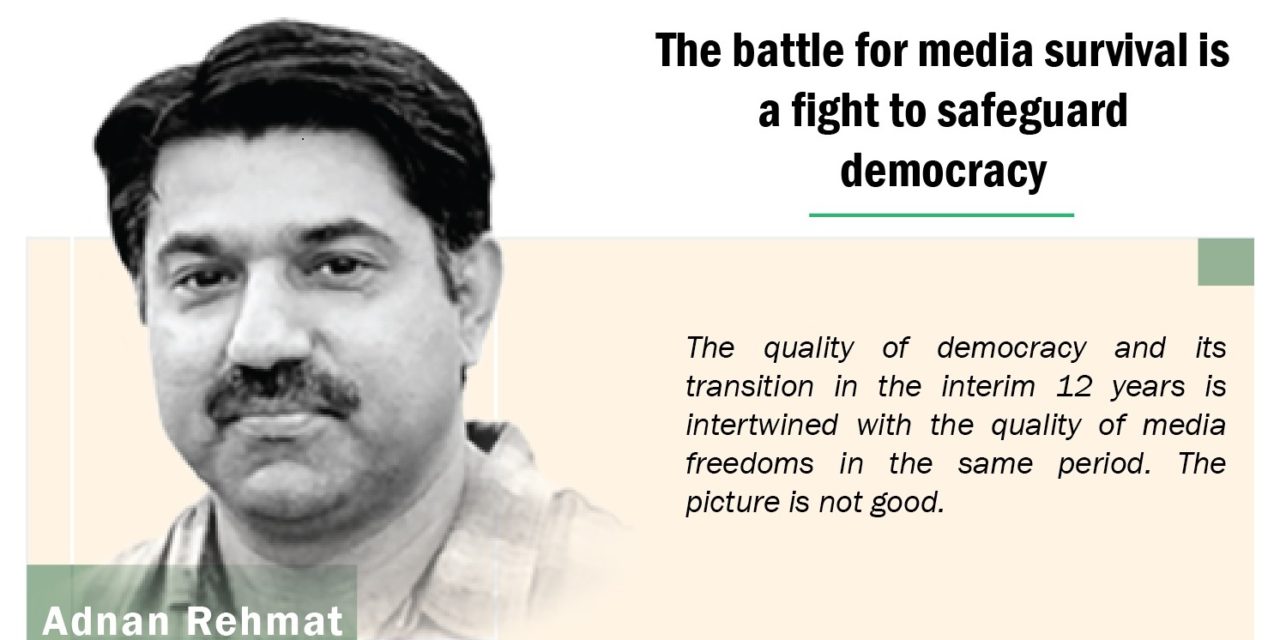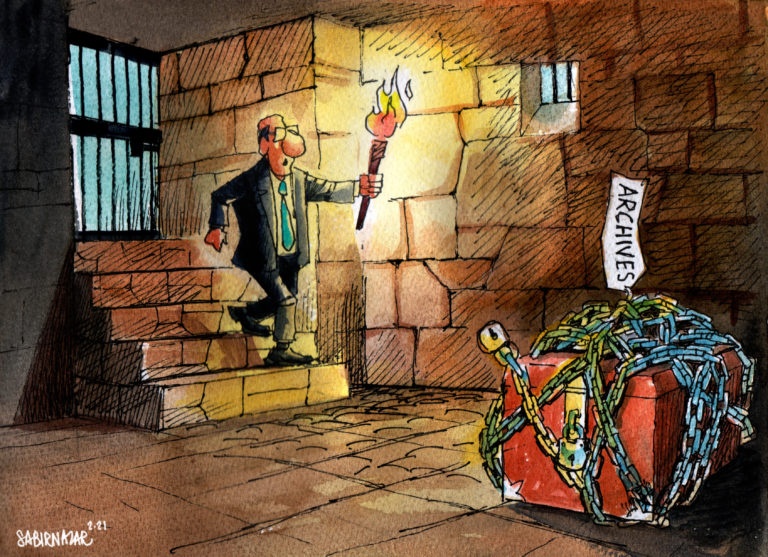A democracy is as good as the state of freedom of expression and right to information that is functionally practiced in a society. The latest in the series of transitions back to democracy from direct military rule in Pakistan started in 2008 and is a process still unfolding. The quality of democracy and its transition in the interim 12 years is intertwined with the quality of media freedoms in the same period. The picture is not good.
Consider: At least 95 journalists have been killed in the line of duty for their journalism work in Pakistan in this period, according to statistics compiled by Pakistani media watchdog Freedom Network (FN). Dozens of others have been attacked, injured, kidnapped, or arrested. This makes Pakistan one of the top five worst places on the planet to practice journalism, according to annual rankings for this period by international groups like Reporters Without Borders (RSF) and Committee to Protect Journalists CPJ).
From amongst these cases, the killer of only one journalist was convicted at the first stage of trial but set free at the high court stage. The levels of impunity of crimes against journalists and media in Pakistan is among the worst in the world according to CPJ and FN annual impunity rankings. How can media be considered free in a climate where murders and harassment of media practitioners is so easy and mostly goes unpunished?
If assassination is the worst form of censorship, then excess regulatory control further shackles freedom of expression and militates against access to information. After a period of expansion in the media landscape that allowed non-state broadcast media, things started changing around 2017 when media started to be browbeaten into extended caricaturization of politics, demonization of parliament and destabilization of the then democratic government.
Whole scale media narratives were promoted at removing an elected prime minister and disrupting the consolidation of a democratic process that would have strengthened with a smooth transfer of power between two elected governments consecutively for the first time in the country’s political history.
But this was not to be. The 2018 elections reporting environment was arm-twisted and manipulated in favour of a party that eventually came to power under controversial circumstances. This party, the Pakistan Tehrik-e-Insaf, soon after taking control unleashed a process of censorship and media intimidation that finds no parallel even with the 1999-2008 martial law regime.
The fragile and manipulated quality of democracy in Pakistan today is reflected in the extremely controlled and regulated media landscape, aided by a government that has discernibly stepped up its policy of low tolerance for dissent and has shown a vindictive streak against its political opponents and a liking for targeting of independent media. The arrest of Mir Shakilur Rehman and holding him without a trial for 150 days is a case in point, showing how even the largest media group in the country is not safe.
This governmental policy has translated into a closing of spaces for freedom of expression, shrinking of access to information and a crackdown on online dissent and diversity. Generally, media, political parties and civil society — all are reeling under Imran Khan’s authoritarian government when it comes to exercising freedom of expression. The interviews of heads of opposition political parties are routinely disallowed or censored.
The statistics about excesses against the country’s media over the 2019-20 period alone make for grim reading. According to the annual Press Freedom Report 2020 released by Freedom Network on May 1, 2020 — titled “Murders, Harassment and Assault: The Tough Wages of Journalism in Pakistan” — there were 11 assassination attempts on journalists, of which eight succeeded while three journalists survived with injuries; 23 journalists received threats of death or dire consequences for their journalism; two were abducted, nine were arrested; 10 were injured in physical assaults; another 10 were issued gag orders — censored — while eight journalists were slapped with legal cases.
The most worrisome aspect of the findings was that in 42% of the 91 cases of excesses documented, the journalists or their families accused state functionaries of involvement in their victimisation, including three deaths. So at least in these cases the perpetrators were known, but no action was taken.
This was even before the cases of abduction or harassment of independent-minded professional journalists like Matiullah Jan and Ahmed Noorani in 2020. Under this government, dozens of Pakistan’s finest journalists have been forced out of jobs – their inability of finding new jobs is ascribed to pressure on the media industry by the government and its backers. This ensures they do not offer people informed opinion and quality analysis thereby affecting the right to informed political discourses for Pakistan’s citizenry.
After the effective silencing of conventional mainstream media – print and electronic – from conducting independent journalism, the audiences have shifted online where social media now substitutes for the political discourses that are so necessary to strengthen democratic traditions. But here also the government and state are attempting to squeeze open spaces for dialogue and discussion.
The government is currently attempting to expand powers of the broadcast regulator to police the internet (even though it has a separate regulator) and impose license fees on web TV any other video content online, along with steep fines and jail terms. In parallel, the government is attempting to equip the telecom regulator with draconian powers to crack down on “online harms” but effectively aiming to curb dissent online.
According to the Institute for Research, Advocacy and Development (IRADA), a civil liberties organisation, official statistics from Facebook and Twitter also show a doubling of requests from the government to the two social media giants to censor or take down accounts and pages of Pakistani citizens. Pakistan submitted a total of 1,849 censorship requests to Facebook in the first half of 2019 (the highest number in the world from any country) and another 2,027 (the second highest from any country) in the second half of 2019 while a total of 273 requests were sent to Twitter in the first half of 2029 specifying 1,798 accounts in the same period.
Additionally, the current period is a nightmare for journalists as their media houses are being subjected to a financial squeeze by the government. Public sector advertising for media has been slashed by more than 50% as compared to two years ago, dealing a crippling blow that has simply devastated the media economy. For most media houses, this public sector advertising has lifeline status. Some TV channels and print titles have closed while others are struggling. Coming off the back of a deteriorating economy, this will only mean the media size will shrink further if the government continues on this path.
The debilitating result: Over 3,000 journalists have lost jobs and about an equal number have been handed steep pay cuts. Many others routinely contend with arrears in disbursement of salaries.
The accumulative effect of all this is that the media in Pakistan is now so squeezed under undeclared but operationalized government policy of censorship that it clearly has only one objective: discourage people-driven political discourses, curtail plural political narratives and force Pakistan back into a state-dictated anti-political and anti-democratic narratives of the last century that don’t serve the people.
The fight for media freedoms in Pakistan has morphed into a fight for not only the survival of the media industry but also the viability of democracy and open society.
[Adnan Rehmat is a journalist and media rights activist]


